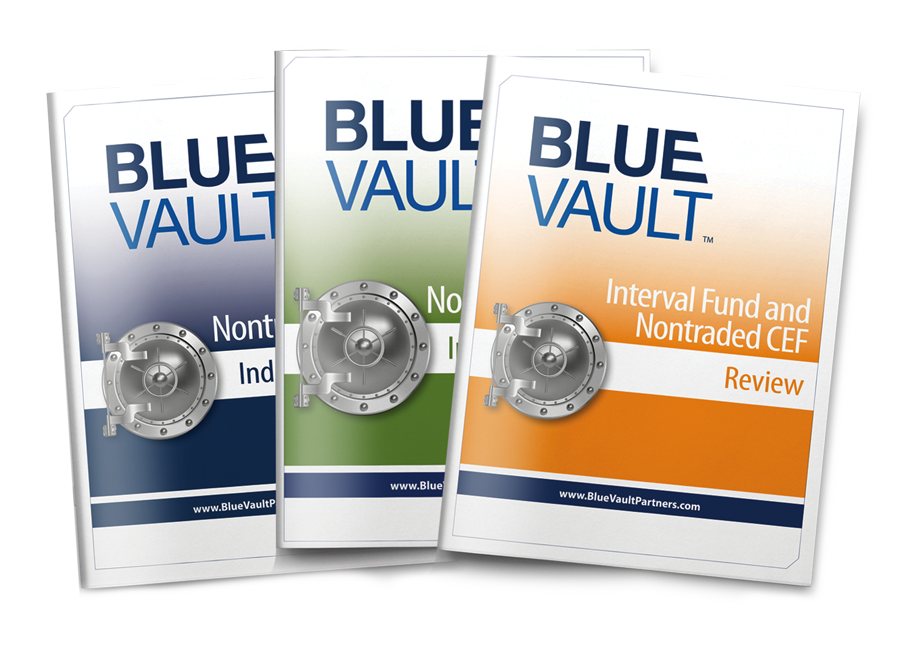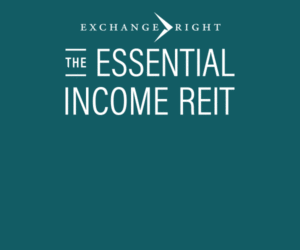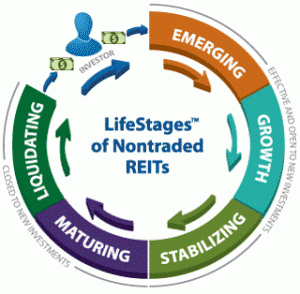LEARN
Types of Alts
There are several primary types of alternative investments. Within each, there are variations in structure, and in the types of assets invested in – which are often called the asset class or property type. For example, a nontraded REIT may invest in the distribution warehouse asset class.
1031 Exchange Programs
Section 1031 of the Internal Revenue Code allows an investor to defer the payment of capital gains taxes that may arise from the sale of a business or investment property. By using the proceeds of the sale to purchase “like-kind” real estate, taxes may be deferred, as long as the investor satisfies certain conditions.
The investor can exchange the investment without recognizing a taxable capital gain, allowing the investment to continue to appreciate tax deferred. There is no limit on the number of 1031 exchanges that can be utilized, rolling over the gain from one property to another, indefinitely.
Before passage of the new tax legislation on Dec. 22, 2017, some exchanges of personal property – such as franchise licenses, aircraft, and equipment – qualified for a 1031 exchange. Under the new law, only real estate qualifies. Exchanges of corporate stock or partnership interests never did qualify – and still don’t. On the other hand, interests as a tenant in common (sometimes called TICs) in real estate still do.
The majority of 1031 exchanges are delayed and are three-party exchanges, involving an intermediary. A qualified intermediary holds the cash after the investor sells a property and uses it to buy a replacement property. This exchange is treated as a swap. There are two timing rules for a delayed exchange. An investor must designate a replacement property in writing within 45 days of the property sale, and the new property investment must close within 180 days of the sale of the old.
BDCs
Business development companies (BDCs) were first created by Congress in 1980 to provide growth capital to small, typically private companies. BDCs offer institutional quality asset management of a portfolio of debt or equity investments that can generate income for individual investors. Most BDCs elect to be treated as Registered Investment Companies (RICs) for tax purposes and must distribute 90% of their taxable income to shareholders each year, enabling investors to benefit from the underlying portfolio without being subject to corporate taxes.
BDCs provide investors with exposure to debt and equity investments in predominantly private companies, which are typically hard for individual investors to invest in. BDC investments may diversify investors’ portfolios with securities that can display substantially different returns from stocks and bonds. However, because most BDC holdings are typically invested in illiquid securities, a BDC’s portfolio has subjective fair value estimates.
Most BDCs had been closed-end funds that traded on the New York Stock Exchange or other public exchanges. That changed around 2009, when interest in non-traded BDCs increased.
Delaware Statutory Trusts (DSTs) – A Type of 1031 Exchange
A Delaware statutory trust (DST) is a separate legal entity created as a trust under the laws of the state of Delaware. When used for a 1031 exchange, the DST owns the property (or properties), and each investor holds “beneficial interests” in the DST. For tax purposes, the IRS recognizes each investor’s ownership in the DST as an undivided interest in the property belonging to the DST. The size of each investor’s ownership interest in the DST is proportionate to the amount they invest, relative to all other investors. For example, if the total equity offering is $5 million, an investment of $250,000 represents 2.5% of the DST.
For tax purposes, each owner of a DST receives depreciation expense deductions in proportion to the beneficial interest they own in the DST.
Direct Participation Programs (DPPs)
A direct participation program (DPP) is a pooled entity that offers investors access to a business venture’s cash flow and tax benefits. Also known as a “direct participation plan,” DPPs are non-traded pooled investments in real estate or energy-related ventures over an extended time frame. A DPP is usually organized as a limited partnership, a subchapter S corporation or a general partnership.
In most direct participation programs, limited partners put up money (their stake is quantified in “units”), which is then invested by a general partner. Most DPPs are managed passively and have a lifespan of five to 10 years. During that time, all tax deductions, as well as the DPP’s income, are passed to partners. Because of the income they generate and their pooled nature, DPPs have become a popular way for average investors to access investments that have normally been reserved for wealthy investors, though with some restrictions.
DPPs are not traded, which means that they lack liquidity and a reliable pricing mechanism — especially compared to equities that trade on an organized exchange. As such, DPPs tend to require that clients meet asset and income thresholds to invest. These requirements can vary by state.
The most common DPPs are non-traded REITs (about two-thirds of the DPP market), non-listed business development companies (BDCs), energy exploration and development partnerships, and equipment leasing corporations. A DPP may have the legal structure of a corporation (such as a REIT), a limited partnership or a limited liability corporation (LLC), but in practice, all behave like a limited partnership. A DPP gives an investor partial ownership of a physical asset, such as the underlying property in a REIT, the machinery in an equipment leasing venture or wells and income from oil sales in an energy partnership.
Interval Funds
An interval fund is a type of closed-end fund with shares that do not trade on the secondary market. Instead, the fund periodically offers to buy back a percentage of outstanding shares at net asset value (NAV). Interval funds may invest in credit (loans), credit and equity, equity, hedge funds, insurance-linked securities, real estate, and other types of investments.
The structures of interval funds, along with the types of assets held, make this investment largely illiquid compared with other funds. High yields are the main reason investors are attracted to interval funds.
Interval fund shares are usually offered for sale daily by the fund at the current net asset value. Depending on the fund and its guidelines, shares may be restricted to accredited investors, but most interval funds are available to anyone.
As described in the fund prospectus, interval funds periodically offer to repurchase shares of the fund at the stated NAV. The repurchase period can be every 3, 6 or 12 months. Most funds offer to repurchase quarterly.
The repurchase announcement will specify a date by which investors must accept the repurchase offer and the percentage of all outstanding shares the fund will buy – usually 5% and sometimes up to 25%. Since repurchase is done on a pro rata basis, there is no guarantee that an investor can redeem the desired number of shares during a given redemption period.
Because of these restricted selling opportunities, an interval fund should be considered a long-term, mostly illiquid investment.
Nontraded Preferred Stock
Several listed REITs and BDCs are raising capital by issuing nontraded preferred stock. This type of security is senior to common stock, meaning it is less risky. Dividends on preferred shares must be paid before common shares, and, unlike common shares, the board of directors does not have the authority to cut the dividends on preferred shares. Dividends that are unpaid may also accrue on a cumulative basis and must be paid in arrears before dividends on common shares are paid.
Preferred shares may, in some cases, be sold back to the issuing company, with a sliding scale of redemption fees based upon the holding period. Redeemable preferred stock may, after a specified period, be redeemed at the option of the issuer in exchange for cash at the stated value of the preferred shares or in common shares of the company’s listed stock, plus any previously unpaid dividends.
Private Securities Offerings
A private placement raises capital by the sale of securities to a relatively small number of select investors. Investors involved in private placements can include large banks, mutual funds, insurance companies and pension funds. A private placement is different from a public issue in which securities are made available for sale on the open market to any type of investor.
A private placement has minimal regulatory requirements and standards that it must abide by. It is a method of capital raising that does not have to be registered with the SEC. Its investors include a small pool of entities and individuals. The investment does not require a prospectus and in many cases, detailed financial information is not disclosed.
Since the private placement regulations allow an issuer to avoid the time and expense of registering with the SEC, the process of underwriting the security is faster, which allows the issuer to receive proceeds from the sale in less time. If an issuer is selling a bond, it can also avoid the time and expense of getting a credit rating from a bond agency. A private placement issuer can sell a more complex security to accredited investors who understand the potential risks and rewards, and the firm can remain a privately owned company, which avoids the need to file annual disclosures with the SEC.
Qualified Opportunity Zone Funds
Opportunity Zones were added to the tax code by the Tax Cuts and Jobs Act on December 22, 2017. Opportunity Zones are designed to spur economic development and job creation in distressed communities. Opportunity Zones are now designated by all 50 states as economically distressed census tracts where new investments may be eligible for preferential tax treatment.
There are approximately 8,700 opportunity zones nationwide. The list of designated Qualified Opportunity Zones can be found at Opportunity Zones Resources.
Opportunity Zones provide tax benefits to investors by deferring taxes on prior gains invested in a Qualified Opportunity Fund (“QOF”) until the earlier of the date on which the investment in the QOF is sold or exchanged, or December 31, 2026. If the QOF investment is held for longer than five years, there is a 10% exclusion of the deferred capital gain. If held for more than seven years, the 10% becomes 15%. If the investment in the QOF is for at least ten years, the investor is eligible for an increase in basis of the QOF investment equal to its fair market value on the date that the QOF investment is sold or exchanged. This means there is no taxable capital gain.
A QOF is any investment vehicle which is organized as a corporation or a partnership for the purpose of investing in qualified opportunity zone property (other than another qualified opportunity fund) that holds at least 90 percent of its assets in qualified opportunity zone property. To become a QOF, an eligible corporation or partnership self-certifies by filing Form 8996, Qualified Opportunity Fund, with its federal income tax return.
Like other investments, an investment in a QOF may increase or decrease in value over the holding period. In addition, income may be paid on this investment. Given that the purpose of the program is to improve particular areas, it is expected that the fund will continue to invest in the improvement of the property. Cash flow may occur once the property improvements are complete, and the property is leased or sold to third parties.
REITs
A real estate investment trust or “REIT” is a trust company that raises equity through an initial public offering (IPO), which is then used to buy, develop, manage and sell assets in real estate. The IPO is identical to any other security offering with many of the same rules regarding prospectuses, reporting requirements and regulations; however, instead of purchasing stock in a single company, the investor in a REIT’s common stock is buying a portion of a managed pool of real estate. This pool of real estate then generates income for the REIT through renting, leasing and selling of property and distributes it directly to the REIT holder on a regular basis.
Listed REITs have common shares that trade on a stock exchange and are therefore liquid. The shares of nontraded REITs are not listed and have limited liquidity, primarily through share redemption programs. Redemptions are typically restricted to a small percentage of outstanding shares each quarter, or in cases of shareholder disability or death.
To qualify as a REIT with the IRS, a real estate company must agree to pay out at least 90% of its taxable profit in dividends (and fulfill additional but less important requirements). By having REIT status, a company avoids corporate income tax. A regular corporation makes a profit and pays taxes on its entire profit, and then allocates its after-tax profits between dividends and reinvestment. A REIT distributes all or almost all of its profits and is not subject to corporate taxes.
REITs typically focus on either equity or debt.
- Equity REITs invest in and own income-producing real estate properties and give investors the opportunity to invest in these portfolios. They must distribute at least 90% of the portfolio’s income to shareholders in the form of dividends.
- Debt or mortgage REITs invest in and own property mortgages. They also loan money to real estate owners and operators not only for mortgages but for different types of real estate loans or through purchasing mortgage-backed securities. Their earnings are generated primarily by the net interest margin, the spread between the interest they earn on mortgage loans and the cost of funding these loans. This strategy makes them potentially sensitive to interest rate increases, but by utilizing variable rate debt and investing in variable rate loans and other securities, these REITs can effectively neutralize the risk of interest rate changes.
Tender Offer Funds
Tender offer funds are continuously offered closed-end funds that are not listed on a stock exchange and provide investors with liquidity by periodically offering to repurchase a percentage of their outstanding shares. The funds are permitted to offer an unlimited number of shares.
In contrast to interval funds with their prospectuses that specify that they will redeem shares on a regular basis (typically for up to 5% of shares outstanding on a quarterly basis), tender offer funds have redemption policies that make share redemptions subject to the discretion of the Board, and when they are deemed to be in the best interests of the fund and its shareholders. This flexibility in redemptions policies gives recognition to the long-term nature of the fund investments. At times, market conditions may dictate that liquidating a fund’s assets to meet redemption requests may not be in the best interest of remaining shareholders.
The types of investments that tender offer funds and interval funds can make also differentiate them from mutual funds. In order to meet daily redemption requests, mutual funds are subject to more stringent regulatory limitations than closed-end funds. In particular, a mutual fund generally may not invest more than 15% of its assets in illiquid securities.
The term “tender offer” refers simply to a company’s filed statement letting shareholders know they’re willing to redeem shares for cash. Many types of companies issue tender offers, including both interval funds and tender offer funds.
Upcoming Webinars
The Next Wave of Interval Funds: What Advisors Should Know
- Daniil Shapiro
- | Moderator
- Michael Perini
- | Speaker
- Stacy Chitty
- | Speaker
AUM Growth in a Metals Boom: How RIAs Are Using Gold and Silver Today
Explore
Access Detailed Asset Manager and Offering Information
Become a member to access our detailed reports and get info on sponsor acquisitions, capital raise and financials.






